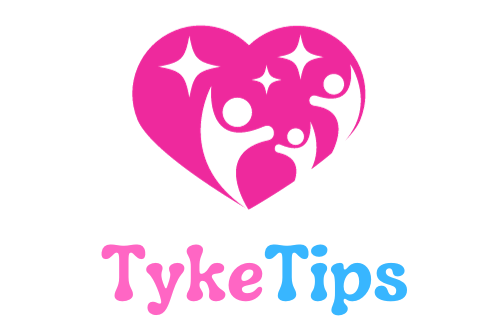You’re now at 33 weeks of your pregnancy journey, eagerly anticipating the arrival of baby #2. In this video by Hapa Family, Ashley provides an update on the baby’s development and her own pregnancy symptoms at this stage. She also discusses the age-old debate of epidural versus natural birth, offering insights and personal experiences for expecting mothers to consider.
It’s a special time where you get to witness the amazing growth of your little one while navigating the ups and downs of pregnancy. By exploring the differences between epidural and natural birth, you can make an informed decision that aligns with your preferences and values. Stay connected with Hapa Family for more updates and valuable resources on your pregnancy journey.
Development of Baby at 33 Weeks
At 33 weeks gestation, your baby is continuing to grow and develop rapidly. At this stage, your baby weighs around 4 to 5 pounds and measures about 17 to 18 inches in length. Your baby’s bones are hardening, and their skin is becoming less wrinkled as they accumulate more fat underneath. The baby’s lungs are also maturing, preparing them for breathing air outside the womb. Your baby’s movements may feel different as they have less space to move around, but they are still active, kicking, and punching.
Pregnancy Symptoms at 33 Weeks
It is common to experience a variety of symptoms at 33 weeks pregnant. Some of the most common symptoms include back pain, pelvic pressure, increased urination, swelling of the feet and ankles, and heartburn. To manage these symptoms, it is essential to practice good posture, wear comfortable shoes, drink plenty of water, and elevate your legs to reduce swelling. Eating smaller, more frequent meals and avoiding spicy or greasy foods can help alleviate heartburn. Practicing relaxation techniques such as deep breathing or prenatal yoga can also provide relief from discomfort.
Comparison of Epidural and Natural Birth
Epidural anesthesia involves the injection of pain-relieving medication into the epidural space of the spine to numb the lower half of the body during labor. It provides effective pain relief and allows the mother to remain awake and alert during childbirth. However, some potential side effects include lowered blood pressure, headache, and numbness. On the other hand, natural birth involves managing labor pain without the use of medical interventions. Techniques such as hypnobirthing, water birth, and breathing exercises can help women cope with labor pain naturally. The choice between epidural and natural birth is a personal decision that depends on individual preferences and medical considerations.

Epidural: Procedure and Effects
During labor, an anesthesiologist will administer the epidural by inserting a needle into the epidural space of the spine. A catheter is then threaded through the needle, allowing for continuous administration of the medication. The effects of an epidural are typically felt within 10 to 20 minutes, providing pain relief for the duration of labor. However, some side effects may include shivering, temporary weakness in the legs, and itching. Complications such as nerve damage, infection, or accidental puncture of the dura mater are rare but possible.
Natural Birth: Techniques and Benefits
Natural birth involves various techniques that can help manage labor pain and promote a positive childbirth experience. Hypnobirthing focuses on relaxation and self-hypnosis techniques to reduce discomfort during labor. Water birth involves giving birth in a tub of warm water, which can provide pain relief and promote relaxation. Breathing exercises, massage, and movement can also help women cope with contractions and encourage active labor. The benefits of natural birth include a faster recovery time, reduced risk of medical interventions, and a greater sense of empowerment and control during childbirth.
Preparing for Labor and Delivery
As you approach your due date, it is essential to prepare physically and emotionally for labor and delivery. Practicing prenatal exercises such as walking, swimming, or prenatal yoga can help build strength and stamina for labor. Creating a birth plan that outlines your preferences for pain management, labor positions, and postpartum care can help you communicate effectively with your healthcare provider. It is essential to discuss any fears or concerns you may have with your partner, doula, or healthcare team to ensure a positive birthing experience.
Support System During Childbirth
Having a support system during labor and delivery can make a significant difference in your birthing experience. A birth partner, such as a partner, family member, or friend, can provide emotional support, encouragement, and advocacy throughout the labor process. A doula is a trained professional who can offer physical and emotional support during labor and provide assistance with pain management techniques. Building a strong support network can help you feel more confident and prepared for childbirth.
Pain Management Options in Labor
In addition to medical pain management options like epidurals, there are various alternative techniques that can help alleviate discomfort during labor. Massage, acupressure, and counter-pressure techniques can help relieve tension and promote relaxation during contractions. Breathing exercises, visualization, and guided meditation can also help manage pain and promote a sense of calm during labor. It is essential to discuss your pain management preferences with your healthcare team and explore different techniques to find what works best for you.
Recovery After Childbirth
After giving birth, it is essential to focus on your recovery and well-being, regardless of the type of birth you experienced. For women who had an epidural, it is common to experience numbness or weakness in the legs immediately after childbirth. Natural birth may result in soreness, perineal tears, or episiotomy that require time to heal. Practicing good self-care, such as staying hydrated, eating nutritious foods, and getting plenty of rest, can promote healing and recovery. It is important to listen to your body, ask for help when needed, and prioritize your physical and emotional well-being during the postpartum period.
Conclusion
In conclusion, the decision between epidural and natural birth is a personal choice that depends on individual preferences, medical considerations, and support systems. Both methods have their pros and cons, and it is essential to weigh your options and communicate your preferences with your healthcare provider. Remember to prepare physically and emotionally for labor and delivery, build a strong support network, and explore pain management options that work best for you. By making informed decisions and seeking the necessary support, you can approach childbirth with confidence and empowerment. Best of luck on your journey to motherhood!

